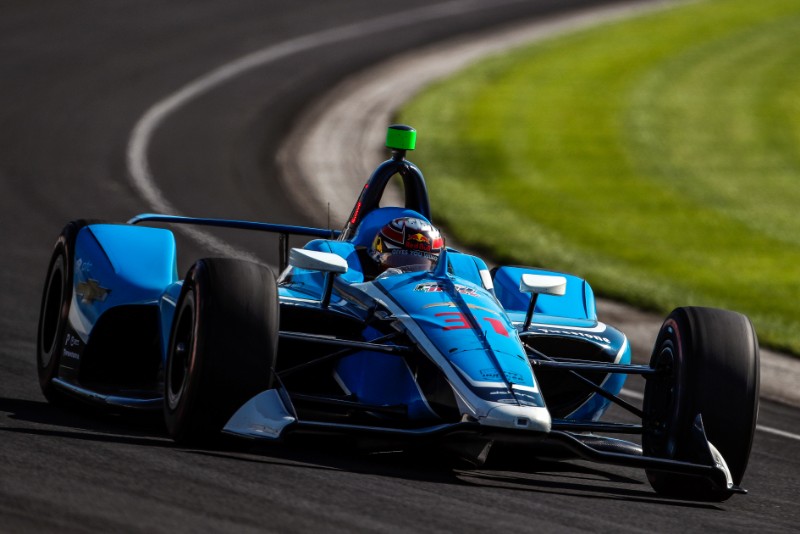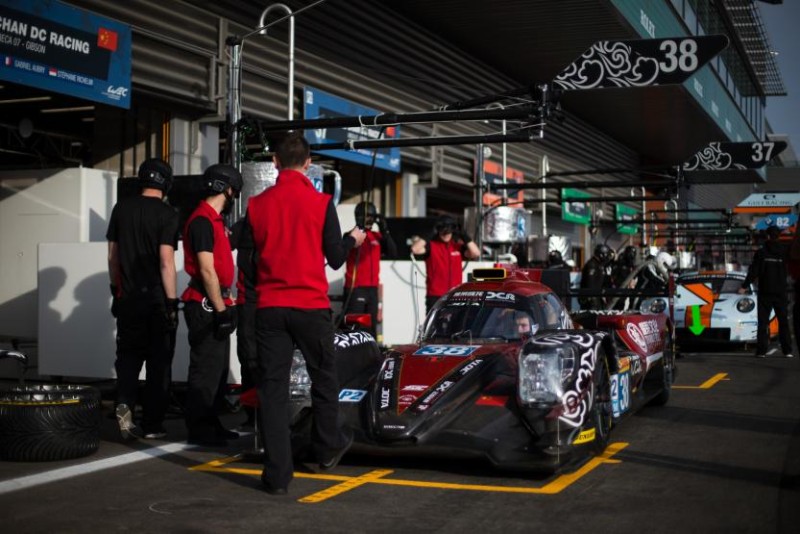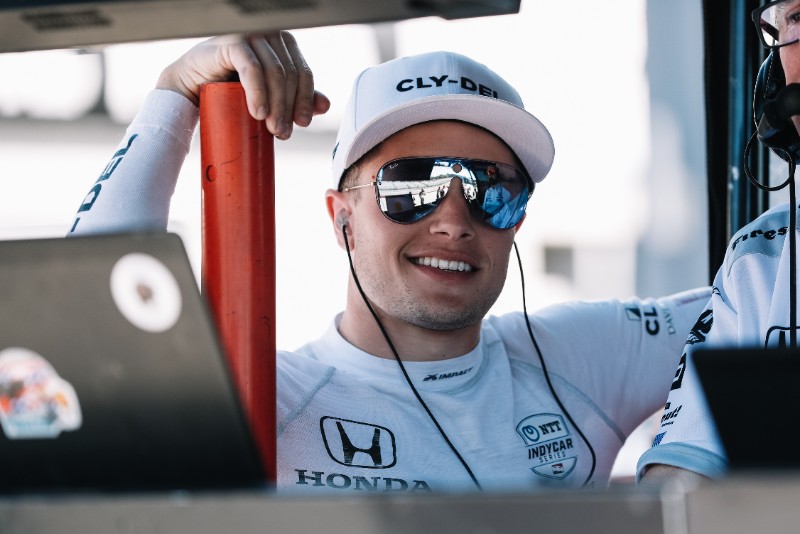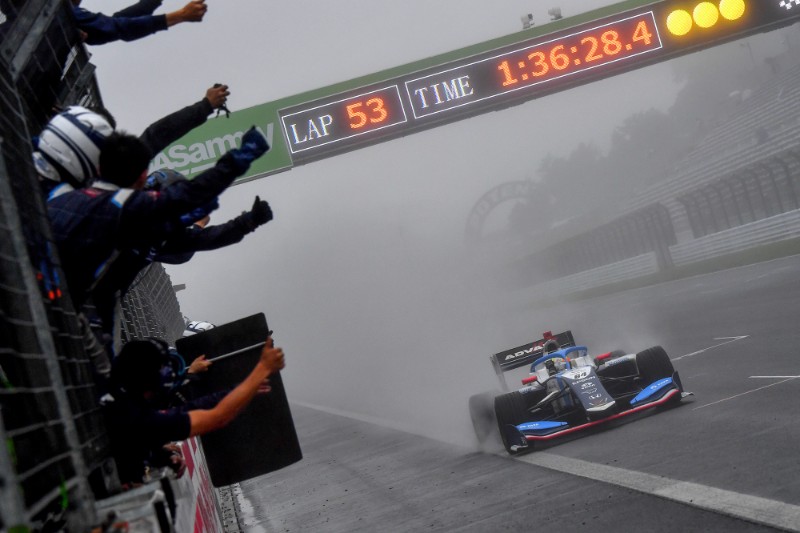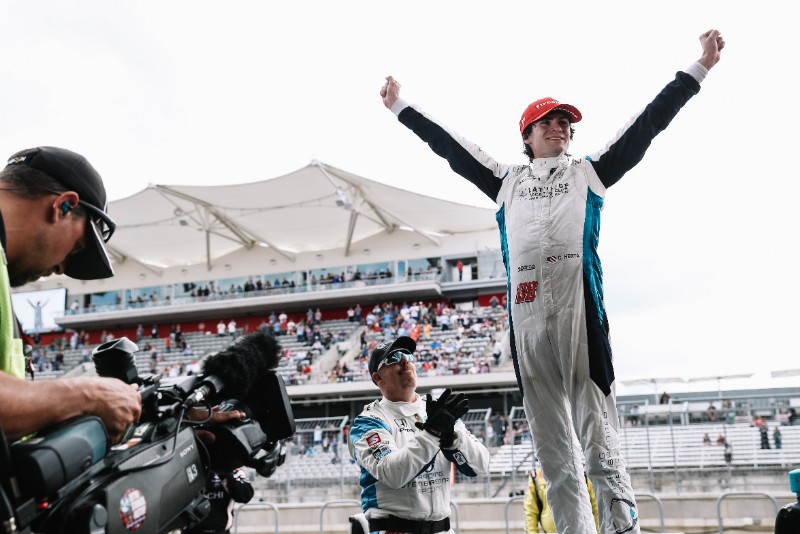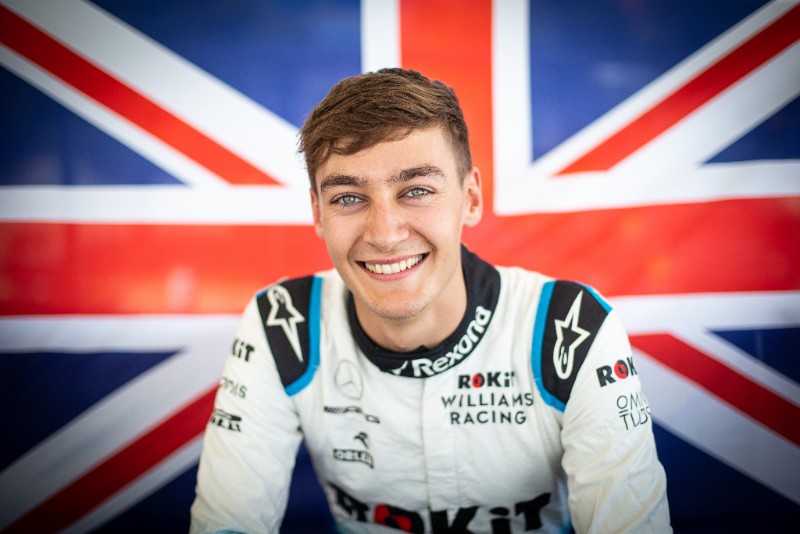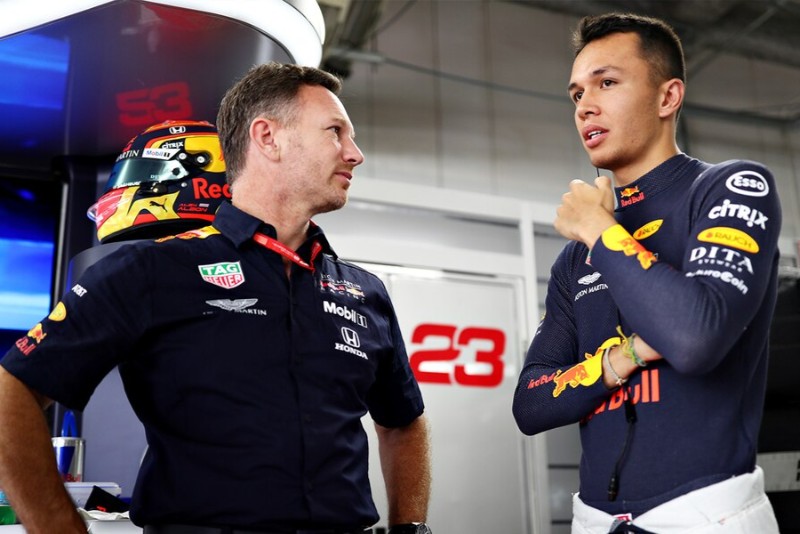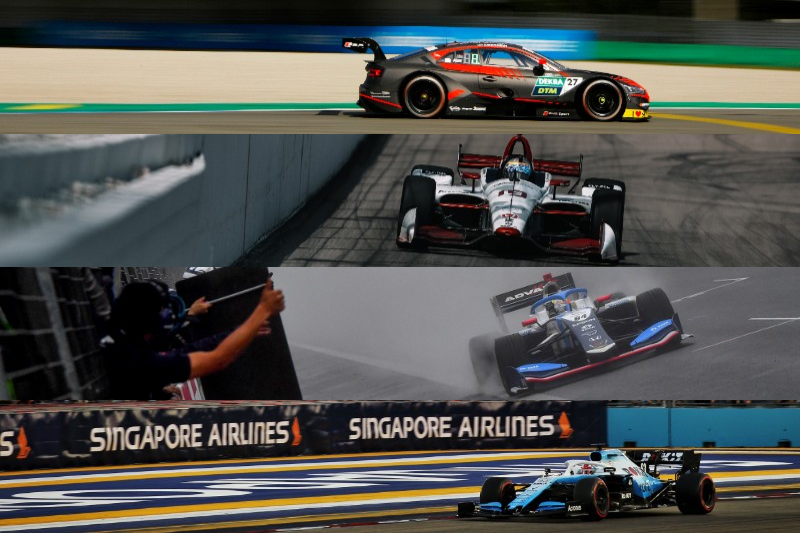
Every year, a selection of junior single-seaters’ top drivers are handed professional opportunities. Some lead to long-term careers in series such as the DTM or World Endurance Championship, while others take the enviable risk of trying to prove themselves in the more cut-throat world of Formula 1 or IndyCar.
Having annually ranked the top 50 drivers in junior single-seater racing since 2011, Formula Scout is now also recognising the achievements of the very best of those who ‘graduate’ into the world of professional racing each year.
Here is Formula Scout’s Class of 2018…
11. Patricio O’Ward MEXICO 20y/o
18th in Super Formula, 26th in IndyCar? ?2018: Indy Lights champion (9 wins, 9 poles, 4 fastest laps), 31st in IndyCar
After a year out of single-seaters, Patricio O’Ward took an impressive Indy Lights title in 2018 and was immediately invited to make his IndyCar debut at Sonoma with Harding Racing – a team that had finished no higher than 13th that season.
He qualified a stunning fifth and finished ninth, having to learn how to manage IndyCar’s Firestone tyres during the race as he had no previous car experience. That prompted the team to sign him for 2019, but the deal fell apart pre-season.
Carlin, with similar form to Harding, saved O’Ward’s IndyCar ambitions and he thanked the team by qualifying and finishing eighth on his return at Circuit of the Americas. Once again it was the tyres that he had to get a handle on, having not done any testing, but his pace and racecraft – including a classy pass on Graham Rahal – served him well enough for a strong result.
A free practice crash meant O’Ward failed to qualify for the Indianapolis 500, but he had already been signed to Red Bull’s Junior Team by then. His new F1 connections led to him making a Formula 2 cameo and then a move to Super Formula, both without any prior car, circuit or tyre experience.
The Pirelli rubber proved particularly troublesome on his F2 debut, but his rate of learning was evident, while his SF move highlighted how difficult that championship is to master. He did finish sixth at the end of his three-race stint, before Red Bull released him so he could sign the contract that will bring him back to IndyCar in 2020 with McLaren Schmidt Peterson.
10. Sho Tsuboi JAPAN 24y/o
11th in Super Formula, 11th in Super GT? ?2018: Japanese F3 champion (17 wins, 14 poles, 16 fastest laps), 16th in Super GT
It required patience for Sho Tsuboi to follow up his 2015 Japanese Formula 4 title with equivalent success in Formula 3, but his three years there led to him becoming the most successful driver in championship history and a Japanese circuit expert.
During 2017 and ’18 he also raced in Super GT300, picking up two wins, and got his first taste of professional top tier racing when partnered with former F1 driver Heikki Kovalainen for last year’s Fuji 500km and finished second.
After a bruising end to his F3 career in the Macau Grand Prix, Toyota hired Tsuboi as early as it could for SF and Super GT this year, disposing 2016 SF champion Yuji Kunimoto of a seat in the former to do so.
Two-time champion Hiroaki Ishiura partnered Tsuboi at INGING in SF, and they were usually closely matched. Tsuboi often pushed too early in qualifying and was down the order as a result – although that approach did earn him a front-row start for his second ever race – and had to depend on his circuit knowledge to better his rookie rivals during the races.
Fifth on his debut and second place at Fuji brought in an impressive amount of points, but there was clearly far more he could have achieved – not least when he caught himself out accelerating on a safety car restart at Sugo and spun out.
In Super GT, it was clear that Toyota was not the strongest but Tsuboi still took a podium alongside Kunimoto.
9. Jonathan Aberdein SOUTH AFRICA 21y/o
10th in DTM? ?2018: 12th in European F3 (1 fastest lap)? ?2017: 9th in ADAC F4 (1 fastest lap)? ?2016-17: F4 UAE champion
Jonathan Aberdein, son of former South African Touring Car driver Chris, failed to translate his F4 United Arab Emirates title-winning form into results in ADAC F4, and for his third season in single-seaters he stepped up to FIA European F3.
Remarkably, Aberdein didn’t look out of touch in the championship. He was unsurprisingly not in the same league as his fellow rookie team-mates Dan Ticktum and Juri Vips at Motopark, but at Silverstone he did pick up two podiums.
A final position of 12th in the standings, sandwiched between 2019 Japanese F3 champion Sacha Fenestraz and DTM rival Ferdinand Habsburg, was respectable, and he scored more points than his three other full-time team-mates combined.
His subsequent promotion to an Audi DTM seat with the debuting WRT was arguably a surprise based solely on his record, but he had long been impressing in tests, and he rewarded the Belgian squad’s faith by making the top 10 in the standings as the top rookie.
On four occasions he qualified in the top three, and was just 0.068 seconds off pole in just his fifth race. He was foiled by similar margins the two other times he made the front row, both on circuits he was completely new to.
8. Gabriel Aubry FRANCE 21y/o
2nd in 2018-19 WEC LMP2 (3 wins, 3 poles), 4th in IMSA LMP2 (1 win, 1 pole, 3 fastest laps)? ?2018: 18th in GP3
At the end of 2017, Formula Renault Eurocup race-winner Gabriel Aubry got his first taste of LMP2 prototypes in the WEC rookie test under the eye of world champion Nicolas Lapierre and two of his early career mentors.
The 19-year-old?set an impression on the paddock and was immediately linked to a race seat. Aubry denied the speculation at the time, especially after signing for Arden’s GP3 squad for the next season.
At the same time, he made his sportscar debut in a LMP3 car with Arden’s partner team Jackie Chan DC Racing in Asia. In March 2018, DC Racing signed him to drive its lead 2018-19 WEC LMP2 car. With such a high-profile opportunity to focus on, it’s unsurprising that Aubry’s GP3 season was a disappointment with the struggling Arden; he scored just five points.
The Aubry/Stephane Richelmi/Ho-Pin Tung car finished 10th overall in WEC, but its three class wins weren’t enough for the LMP2 title after a morning puncture meant Signatech Alpine beat it to victory and title honours in the 2019 Le Mans 24 Hours.
To add to his stellar 2019, the highlight of which was probably winning the Shanghai 6 Hours on intermediate tyres in dire conditions,?Aubry won in an IMSA LMP2 cameo and is currently sixth overall in the 2019-20 WEC season.
7. Santino Ferrucci USA 21y/o
13th in IndyCar? ?2018: 19th in F2? ?2017: 22nd in F2? ?2016: 12th in GP3? ?2015: 3rd in TRS (1 win, 2 fastest laps)
Santio Ferrucci’s reputation was in tatters last year, following on from behaviour in F2 that was deemed totally unacceptable.
He was setting a good impression in his IndyCar cameos with Dale Coyne Racing though, and was signed up full-time for 2019. Since then he has unapologetically established himself as one of IndyCar’s future stars.
With what has felt like a totally fresh start, he worked very well with four-time champion Sebastien Bourdais and was consistently able to just plug away and finish races ? until the final two rounds. Reliability hurt him at Portland, and he made his only major rookie error at Laguna Seca with an overambitious pass on a restart.
The ovals, somewhat surprisingly given his primarily European racing experience, was where he made the biggest impact. A fully deserving Rookie of the Year at this year?s Indianapolis 500, Ferrucci?s strongest results came in the form of a trio of fourth places with immensely impressive drives at the speedways of Texas, Pocono and Gateway.
He was more than solid on street courses too, and is set to stay with Coyne for 2020, possibly in the Vasser-Sullivan co-entry now “dad” Bourdais is gone. IndyCar may be the only place where he can rebuild his career, but he’s making the most of it.
6. Alex Palou SPAIN 22y/o
3rd in Super Formula (1 win, 3 poles, 2 fastest laps), 15th in Super GT300 (1 pole)? ?2018: 7th in European F3 (2 fastest laps)
While he started his car racing career at the same time as Lando Norris and George Russell, the lack of titles compared to his contemporaries meant Alex Palou never received the patronage that was going to launch him to F1 in the same way.
In 2017, Palou raced in Japanese F3 with underdog team ThreeBond Drago Corse, and bagged a trio of wins as well as a double pole on his debut. While he made headlines by winning in just his second Formula V8 3.5 race, it was the impression he left in Japan that meant after two test appearances he was eagerly signed up by Nakajima Racing for SF two years later.
The driving style that had rewarded Palou in F3 and FV8 3.5 worked wonders with SF’s all-new car and tyres for 2019. He broke track records in pre-season testing, and it was a surprise when fellow rookie team-mate Tadasuke Makino pipped him to pole at the Suzuka season opener by 0.029s. He ran behind his team-mate until serving a penalty earned from a team-induced error, but was still in victory contention until a wheel failure.
Palou finished no lower than sixth on-track in the next five races, including two poles and a dominant first win in extremely wet conditions at Fuji. He went into the Suzuka title decider three points from the front after taking pole, but as favourite to win.
A damaged air intake led to extreme tyre degradation and he finished last, leaving him third in the points. Honda and Satoru Nakajima want to retain Palou, but he’s already aiming for IndyCar with Coyne after an impressive debut test.
Like most in Japan, Palou also doubled up in Super GT this year. He took longer to fight at the front in the GT300 class McLaren he drove with Le Mans winners Team Goh and Seiji Ara, but ended the season on a high with a podium and a pole.
5. Colton Herta USA 19y/o
7th in IndyCar (2 wins, 3 poles, 2 fastest laps)? ?2018: 2nd in Indy Lights (4 wins, 3 poles, 7 fastest laps), 37th in IndyCar
Second-generation talent Colton Herta erupted onto the IndyCar stage with the small Harding Steinbrenner Racing team and became a record breaker almost immediately by winning on just his third start at debuting track COTA.
The teenager proved that this was no fluke by backing this up with three pole positions and crushing the opposition at the Laguna Seca season finale to emulate his father Bryan’s 1998 & ’19 successes.
Harding’s one-car operation was assisted by juggernaut Andretti Autosport, but by no means should that take anything away from Herta. There were regular occurrences where he was faster than all four Andretti cars.
Herta did make the occasional rookie error, but the predominant reason he narrowly missed out on winning the Rookie of the Year honours was through misfortune. A run of three races in which he was classified last ? including the double points-awarding Indianapolis 500 where his car gave way after a handful of laps ? made a considerable dent in his points tally.
It?s little surprise that Herta (and Harding) will be fully integrated into Andretti’s line-up in 2020, a deal that was announced a year to the day after Herta was beaten to the Indy Lights title as an Andretti driver by O’Ward.
In addition to his newfound IndyCar fame, Herta won the hotly contested GTLM class in the Daytona 24 Hours at the star of the year with Rahal Letterman Lanigan Racing in a BMW.
4. Maximilian Gunther GERMANY 22y/o
17th in 2018-19 FE? ?2018: 14th in F2 (1 win)? ?2017: 3rd in European F3 (5 wins, 3 poles, 2 fastest laps), 5th in Macau GP
Every expectation of Maximilian Gunther was surpassed in 2019, although it shouldn’t be surprising for those who have watched him race over the last few years.
His final F3 campaign with Prema in 2017 was one where he matured significantly, although results trailed off when his long-term future was weakened by Mercedes-Benz announcing its DTM departure. He gained enough sponsorship to step up to F2 with Arden last year, where he then had to handle the challenge of having inferior equipment to his opposition.
He joined Formula E team Dragon Racing as reserve driver during his F2 campaign, and was promoted to a race seat for the 2018-19 FE season, meaning he had to handle racing with an uncertain future and with inferior equipment at the same time.
Despite being demoted back into a reserve role for three races, and then driving on a race-by-race basis for the rest of the season, Gunther outclassed world championship-winning team-mate Jose Maria Lopez and outscored him 20 points to three.
He had several memorable moments, not least saving an incredible slide on his Rome return, and qualified or finished in the top five on multiple occasions. In the off-season a vacancy at BMW Andretti opened, and he was snapped up by his local brand.
Gunther topped pre-season testing, and completed a team one-two in the second Diriyah E-Prix before a penalty for overtaking behind the safety car. The 22-year-old, while still in need of some more professionalism, could be FE’s latest winner in 2020.
3. George Russell BRITAIN 21y/o
20th in F1? ?2018: F2 champion (7 wins, 5 poles, 6 fastest laps)? ?2017: GP3 champion (4 wins, 4 poles, 5 fastest laps)
The record books will say that George Russell finished dead last in the 2019 F1 season and without a single point to his name. What they won’t mention is that it was exceptional rookie campaign for the Williams driver.
The situation that the 2018 F2 champion was given was a far from ideal one. His perseverance and demeanour helped him secure his drive, albeit at the very back of the grid. It was clear that the Williams FW42 was a hopeless car – evident straight from its late arrival to pre-season testing – and, to Russell?s credit, he delivered some absolutely mighty performances with it.
His leadership qualities and occasional nipping of the heels of the tight midfield were rare highlights for the struggling team ? and what he has showed this season highlights how big a star Williams has on its hands.
The team has helped him to come out of his shell, and the uncompetitiveness of the car has cut some of the pressure his rookie peers have faced. This has allowed him to start build Williams around him and to adapt to F1 at his own pace.
Had he not made a small error in the German Grand Prix’s tricky conditions, or had his call to pit at the right time been adhered to, he would have taken the point for 10th place (or maybe higher) that ended up going to team-mate Robert Kubica.
To compare with his team-mate has been difficult. Spare parts have been scarce at Williams, especially late-season. The Kubica of 2019, making his F1 return after his life-changing 2011 rally crash, was clearly not the same driver that threatened for wins in the fifth-fastest car in 2010. But that should not take away from the fact that Russell has comprehensively got the best out of his machinery and placed it in positions it does not deserve to be.
=1. Lando Norris BRITAIN?19y/o
11th in F1? ?2018: 2nd in F2 (1 win, 1 pole, 1 fastest lap)? ?2017: European F3 champion (9 wins, 8 poles, 8 fastest laps)
Lando Norris entered F1 as McLaren?s youngest ever driver, as part of an energetic duo with Carlos Sainz Jr, and impressed immensely both on and off the track. Ferociously fast in qualifying, he was more than a match for his more experienced team-mate ? who by many has been considered the driver of the season along with champion Lewis Hamilton and Max Verstappen.
Norris initially looked somewhat hesitant in combat, which does go against him. But by the end of the year, his racecraft was earning the plaudits of his peers and was consistently translating into points. A brace of sixths early in the season were his strongest results ? both times benefiting from issues for Sainz but finishing ahead of Pierre Gasly?s vastly superior Red Bull.
But it was the more frequent point-scoring after the summer break that was more impressive, finishing six of the final nine races in the top 10. His points tally was just over half of Sainz?s, but Norris was blighted by issues beyond his control on a number of occasions ? fire in Canada, engine trouble in Germany and Belgium, and a botched pitstop in Mexico.
The impact he has had off-track has also been exceptional. He is one of a new era of drivers ? one who is very proactive on social media, incredibly fun, and comes across as very genuine. He was unfortunate to a degree to finish outside the top 10 in the standings, a position lost when his lack of aggression allowed Racing Point rival Sergio Perez past in the Abu Dhabi GP.
The raw speed is certainly there, and it’s easy to pinpoint the rooms for improvement in a driver who is very much the antithesis of McLaren drivers of the past, and the model for its future.
=1. Alex Albon THAILAND 23y/o
8th in F1? ?2018: 3rd in F2 (4 wins, 3 poles)? ?2017: 10th in F2 (1 fastest lap)? ?2016: 2nd in GP3 (4 wins, 3 poles, 3 fastest laps)
An insane 18 months for Alex Albon started with a race-by-race F2 deal and ended with one of the most coveted seats in motorsport. Formula Scout revealed the inside story of how the London-born Thai came to be in that position earlier this year.
The humility that Albon shows has served him well, and unlike Gasly ? the man he replaced first at Toro Rosso and then at Red Bull Racing ? he has not been quite so fazed at the seemingly impossible task of walking into Verstappen?s team.
Unlike his fellow rookies, Albon was not groomed for an F1 seat, and his first ever lap in pre-season testing concluded after three corners with a spin. There was also a hefty shunt in China early in the year, but the underlying talent was raising eyebrows and with good reason. He was able to keep up with a rejuvenated Daniil Kvyat, and his performance in the wet in Germany was worthy of the podium that went to his team-mate.
That was his strongest drive of the year with Toro Rosso, and came in the first time he had ever raced an F1 car in the wet. While Verstappen was far from reach in the second half of the season, especially in qualifying, he did the job that Red Bull requested of him effectively and secured his future with the squad for another year.
His nine-race scoring run was only bettered in-season by the dominant Mercedes duo and Verstappen, and had Hamilton not spun him around at the end of the Brazilian GP he would’ve been a clear sixth in the standings.
The mid-season switch into a car difficult to drive, but believed to be attuned closer to his driving style, makes it difficult to judge exactly just how well Albon has performed, but how he has approached his rookie season and its hurdles considering has been admirable. There is, however, the question mark of how well he can do, with full preparations, in 2020.
Written by Elliot Wood and Craig Woollard
